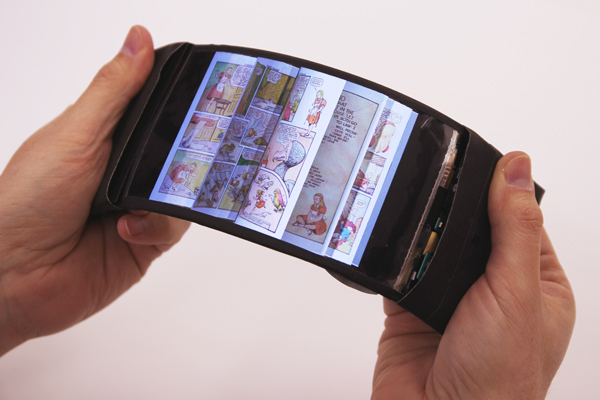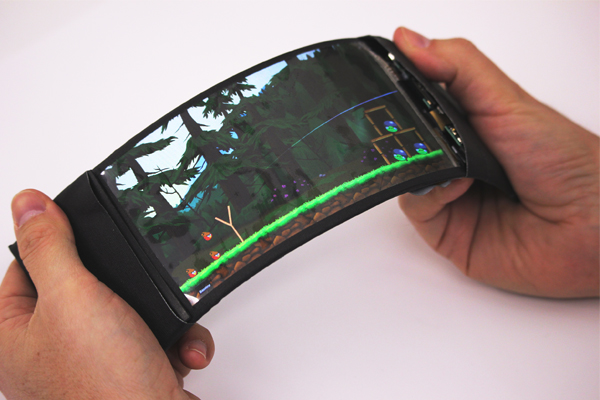Feeling the buzz
February 16, 2016
Share
For most users, bending their smartphone means opening their wallets for expensive repairs. Queen’s University computing professor Roel Vertegaal, on the other hand, sees a bendable smartphone as opening new ways for consumers to interact with their devices and apps.

Researchers at the Human Media Lab have developed the world’s first full-colour, high-resolution and wireless flexible smartphone. The phone, which they have named ReFlex, allows users to experience physical tactile feedback when interacting with their apps through bend gestures. The device measures the degree of bend and adjusts the input accordingly – creating a whole new way of interacting with your smartphone.
“This represents a completely new way of physical interaction with flexible smartphones” says Roel Vertegaal (School of Computing), director of the Human Media Lab at Queen’s University.
“When this smartphone is bent down on the right, pages flip through the fingers from right to left, just like they would in a book. More extreme bends speed up the page flips. Users can feel the sensation of the page moving through their fingertips via a detailed vibration of the phone. This allows eyes-free navigation, making it easier for users to keep track of where they are in a document.”
The ReFlex is no slouch in the technical specs department. It runs on a high definition 720p LG Display Flexible OLED touch screen, and is powered by an Android 4.4 “KitKat” board mounted to the side of the display. Bend sensors behind the display sense the force with which a user bends the screen, which can be used by apps as feedback and input.
ReFlex also features a voice coil that allows the phone to simulate forces and friction through highly detailed vibrations of the display. When changing pages in an ebook, for example, it will simulate the feeling of pages flipping through the user’s fingertips. Combined with the passive force feedback felt when bending the display, this allows for a highly realistic simulation of physical forces when interacting with virtual objects.

“This allows for the most accurate physical simulation of interacting with virtual data possible on a smartphone today,” says Dr. Vertegaal. “When a user plays the ‘Angry Birds’ game with ReFlex, they bend the screen to stretch the sling shot. As the rubber band expands, users experience vibrations that simulate those of a real stretching rubber band. When released, the band snaps, sending a jolt through the phone and sending the bird flying across the screen.”
Dr. Vertegaal thinks bendable, flexible smartphones will be in the hands of consumers within five years. Queen’s researchers will unveil the ReFlex prototype at the 10th anniversary Conference on Tangible Embedded and Embodied Interaction (TEI) in Eindhoven, The Netherlands on Wednesday, Feb. 17. The annual forum is the world’s premier conference on tangible human-computer interaction.
This research was supported by Immersion Canada Inc. and the Natural Sciences and Engineering Research Council of Canada (NSERC). For more information on ReFlex, visit the Human Media Lab website.